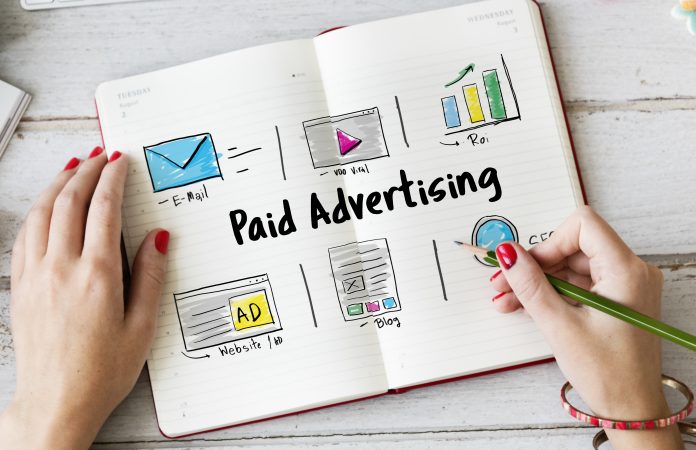Many organizations use Google Ads (formerly Google AdWords) to drive potential customers to their web pages. It’s no surprise that a successful Google Ads campaign can drive significant web traffic. But that’s only part of an effective pay-per-click (PPC) campaign.
The other part is the Google Ads landing page. After clicking on your paid ad, customers may land on a different web page. A static landing page is different from your website pages or other pages. They have one focus – conversion, which is only achieved through social media links.
Whether you want customers to download an eBook, buy a product, or sign up for a free trial, every aspect of a good landing page supports that goal.
You invest time and money to create Google ads to drive traffic to your landing page. If you’re directing paid traffic to pages that aren’t driving conversions, it’s a waste.
So, we’ll walk you through creating a high-converting Google Ads page. We’ll also discuss why you need a dedicated PPC landing page and how to improve its performance.
Best practices of Google Ads Landing Pages
Not all traffic to a PPC landing page will end in conversion. This is a sad truth. However, some failure best practices can help you convert as much of that traffic as possible.
The two main reasons for low landing page conversion rates are the importance of advertising and the landing page experience.
Ad Relevance
Your landing page content should match your PPC commitment. The easiest way to ensure this is to use the same keywords in the ad on your landing page. So if your ad offers a free trial, highlight it on the landing page.
The ad’s value proposition matches the “No Credit Cards Forever” copy on the landing page.
Every aspect of a high-quality landing page reflects your conversion goals. If the goal is to download an eBook, don’t subject your visitors to video presentations of other products. The title of your landing page and landing page should clearly describe what you are offering.
Add high-quality images or videos to give customers a clear idea of your product or service. Use bullets and other design elements to make your copy easy to read and keep your visitors engaged.
Finally, use the language that your audience speaks. For example, if your customers are sneakerheads, add a trend.
Landing Page Experience
Landing page experience refers to the user experience of your PPC landing page. The easier it is to navigate, the more likely customers are to convert.
On the other hand, if your landing page has too much copy, doesn’t load quickly, or has complex keywords, your conversion rate will drop.
Below are the factors that contribute to the experience of failure.
Page load time: Pages that load quickly are bad for your site experience, especially if mobile users are involved.
The bounce rate for mobile users is up to 32% after just three seconds. Use tools like Google Page Speed or Test My Site to optimize your landing page.
Mobile Optimization: Most people access the internet through mobile phones. According to GlobalStats, 59.89% of internet traffic comes from mobile phones.
Make sure your website design includes adaptation to all screen sizes.
PPC landing pages are designed to fit mobile screens. Everything the customer can change – headlines, tags, and calls to action are all on the digital platform.
Navigation: Make the navigation process easy for your visitors by limiting or removing menu bar items and using color-changing call-to-action buttons.
Lead retention style: Customers don’t like long styles that are unnecessary or confrontational. You must strike the right balance between simplifying your lead capture model and collecting comprehensive customer data.
How to Create a Google Ads Page in Five Steps
So far, we’ve covered what Google Ads pages are, why they’re important, and discussed how to optimize them for conversions. Now, let’s look at the five steps to create one.
Step 1. Choose Your Landing Page Designer
Creating a Google Ads landing page is easy with a website builder. Many free and paid web-building tools help you create landing pages without any coding knowledge.
Top website builders offer all-in-one solutions including built-in editors, domain registration, and web hosting.
An important aspect that your web designer must have is marketing integration. After all, that’s what the Google Ads homepage is for. It should help you capture leads that you can nurture and convert.
Step 2. Choose a Landing Page Template
Many popular website creation tools include templates to quickly add content and quickly publish your pages. Templates give you a starting point, allowing you to customize pages to match your brand guidelines or Google Ads design.
Step 3. Add Your Content
After choosing a landing page template, it’s time to add content. Any template you choose should include the following:
- Headings
- The landing page explains the unique value proposition of the product
- Photos or videos showing the product or demonstrating its use
- The CTA tells the lead what to do
- Contact sheet or contact guide
You can add other things, such as testimonials and company logos, such as social proof of the value of the product or service. If your Google ad is a limited-time offer, adding a quote can create a sense of urgency.
Keep your brand’s voice in mind when choosing the text and images to add. A consistent brand experience from Google ads to landing pages can help build a positive brand image and increase customer trust.
Step 4. Choose Your Domain Name and Hosting
Domain names are important for websites. A memorable domain name is key to a strong online presence, adding visibility and credibility to your business. When people search for your brand online, they often use your business name. Therefore, many organizations use their name as a domain name just like Tradekey.com.
Domain names are also important for landing pages. They affect the click-through rate (CTR) of your Google ads. You are more likely to get a higher CTR if your landing page title matches specific keywords for a given search query.
Many website builders offer free domain names associated with their platforms.
Step 5. Preview and Publish
Before you click the publish button, you should preview your login to see how it will look while it’s running. Does the page contain all the information you need to display? Are there any broken links? How is the mobile version?
Additionally, you want to make sure your marketing software integration is working and that you’re getting customer contact information. Don’t forget to include the page title and meta description.
If you forget or want to change something, you can edit the page after it’s gone.













